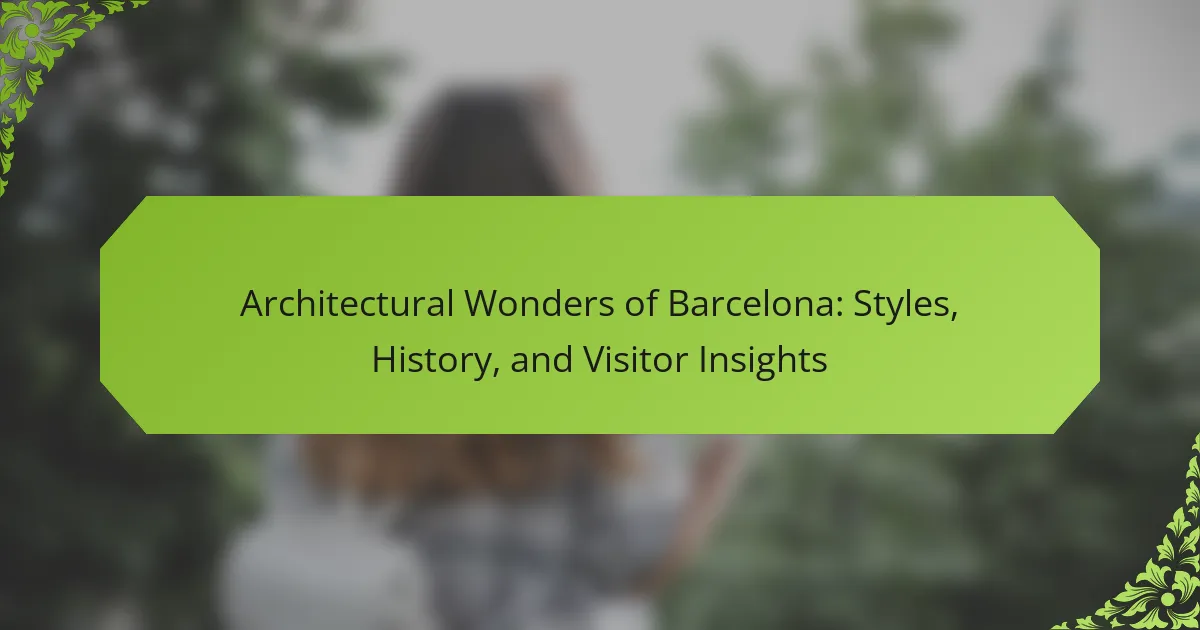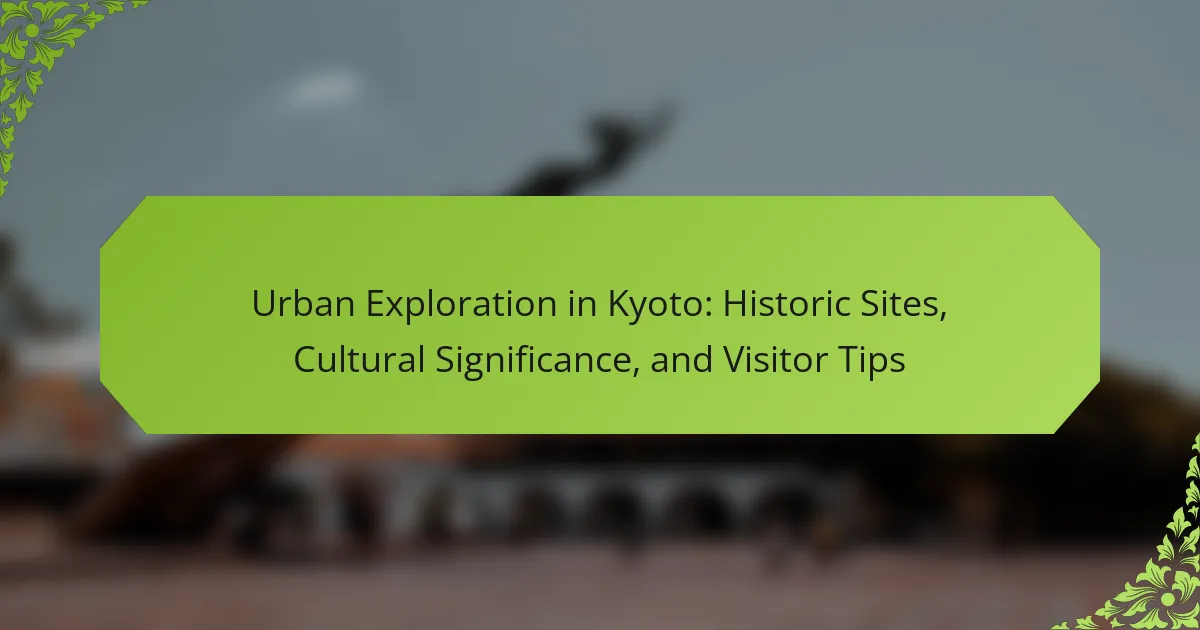Barcelona’s architectural wonders offer a captivating glimpse into the city’s rich history and diverse styles. Explore the Gothic Quarter’s medieval buildings, Antoni Gaudí’s Modernisme masterpieces like the Sagrada Família, and contemporary designs such as Torre Glòries. Discover how local traditions influence preservation efforts and enhance visitor experiences through guided tours and strategic timing. Each landmark showcases unique attributes that reflect Barcelona’s cultural identity and creativity.
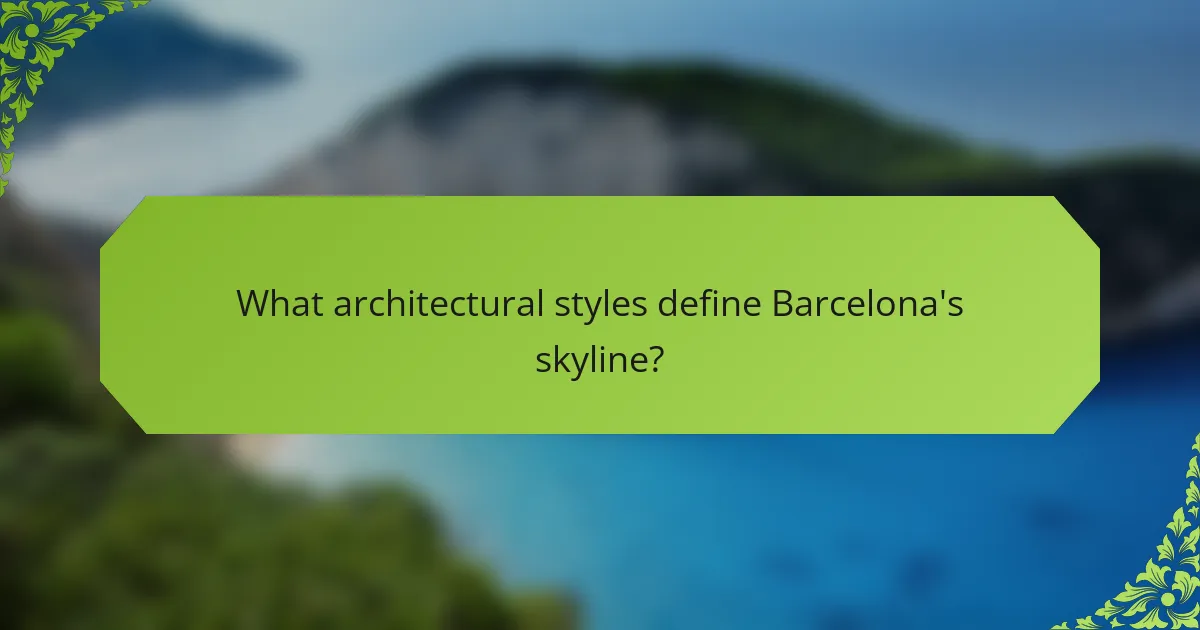
What architectural styles define Barcelona’s skyline?
Barcelona’s skyline is defined by a blend of Gothic, Modernisme, and contemporary architectural styles. The Gothic Quarter features medieval buildings, while Antoni Gaudí’s Modernisme, exemplified by the Sagrada Família, dominates the cityscape. Additionally, contemporary designs like the Torre Glòries showcase innovative architecture.
How does Gothic architecture influence modern designs?
Gothic architecture significantly influences modern designs through its emphasis on verticality, intricate details, and innovative structural solutions. Elements like pointed arches and ribbed vaults inspire contemporary architects to create dynamic spaces. For example, the use of large glass windows in modern buildings reflects the Gothic focus on light. As a result, modern designs often incorporate these historical elements to evoke a sense of grandeur and elegance.
Which features distinguish Modernisme from other styles?
Modernisme is distinguished by its organic forms, intricate details, and vibrant colors. Unlike other styles, it emphasizes a harmonious relationship with nature and incorporates symbolic motifs. Unique attributes include the use of ceramics and wrought iron, which enhance the aesthetic appeal. Additionally, Modernisme often features asymmetrical designs, setting it apart from more traditional architectural styles.
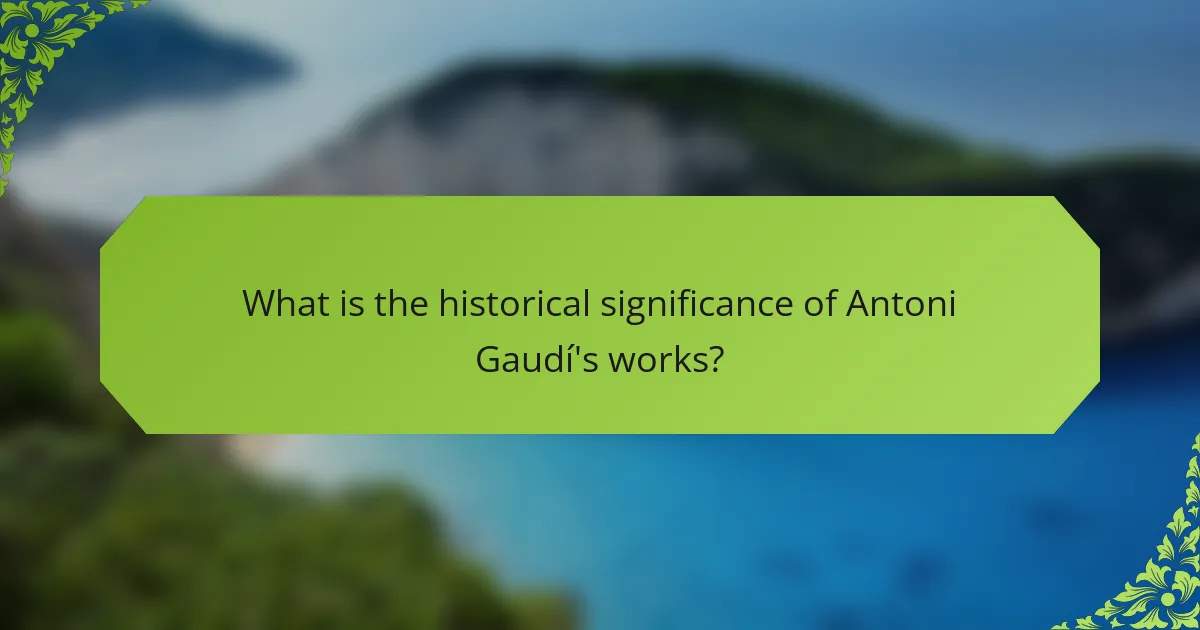
What is the historical significance of Antoni Gaudí’s works?
Antoni Gaudí’s works hold immense historical significance as they represent the pinnacle of Catalan Modernism. His unique architectural style combines natural forms with innovative engineering, influencing generations of architects. Notable structures like the Sagrada Família and Park Güell showcase his vision, blending spirituality with organic shapes. Gaudí’s work reflects the cultural identity of Barcelona, making it a UNESCO World Heritage site and a vital part of the city’s history. His legacy continues to inspire and attract millions of visitors each year, emphasizing the importance of preserving architectural heritage.
How do Gaudí’s techniques reflect the culture of his time?
Gaudí’s techniques reflect the culture of his time by blending modernisme with natural forms. His work embodies the Catalan identity and showcases innovative materials and craftsmanship. The organic shapes and vibrant colors in his designs, such as those seen in the Sagrada Família, illustrate a departure from traditional architecture, emphasizing harmony with nature. This approach resonated with the cultural movements of the late 19th and early 20th centuries, promoting creativity and individuality in response to industrialization.
Which of Gaudí’s buildings are UNESCO World Heritage Sites?
Gaudí’s buildings that are UNESCO World Heritage Sites include the Sagrada Família, Park Güell, Casa Batlló, and Casa Milà. These architectural masterpieces reflect his unique style and innovative techniques. The Sagrada Família is renowned for its intricate facades and ongoing construction, while Park Güell showcases colorful mosaics and organic forms. Casa Batlló features a distinctive façade resembling a dragon, and Casa Milà, known as La Pedrera, boasts a wavy stone exterior. Each site exemplifies Gaudí’s contribution to modernist architecture.
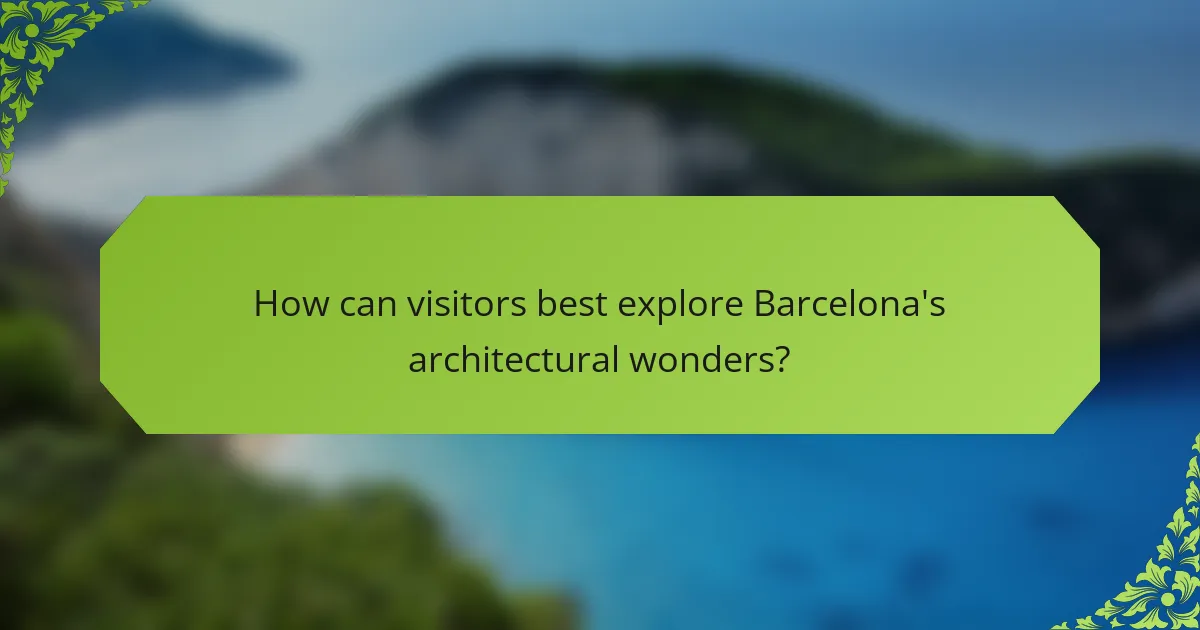
How can visitors best explore Barcelona’s architectural wonders?
Visitors can best explore Barcelona’s architectural wonders by taking guided tours, visiting key landmarks, and utilizing public transportation. Guided tours provide in-depth knowledge about styles like Gothic and Modernisme. Key landmarks include the Sagrada Familia and Park Güell, showcasing unique attributes of Antoni Gaudí’s work. Public transportation, including the metro and buses, makes accessing diverse architectural sites convenient. Exploring at different times of day enhances the experience, revealing rare attributes like lighting effects on buildings.
What are the most popular guided tours available?
The most popular guided tours in Barcelona focus on its architectural wonders, including Antoni Gaudí’s masterpieces. Key tours include the Sagrada Família, Park Güell, Casa Batlló, and Casa Milà. These tours often highlight unique styles like Modernisme and Gothic architecture, offering insights into their historical significance. Visitors appreciate the expert guides who enhance the experience with engaging stories and context.
Which neighborhoods showcase the richest architectural diversity?
The neighborhoods showcasing the richest architectural diversity in Barcelona include Eixample, Gràcia, and Barri Gòtic. Eixample features Modernisme buildings like Casa Batlló and La Sagrada Família. Gràcia offers an eclectic mix of styles, from Art Nouveau to contemporary designs. Barri Gòtic, with its medieval architecture, contrasts sharply with the modern developments nearby. Each area reflects unique historical influences and artistic movements, making them vital for architecture enthusiasts.
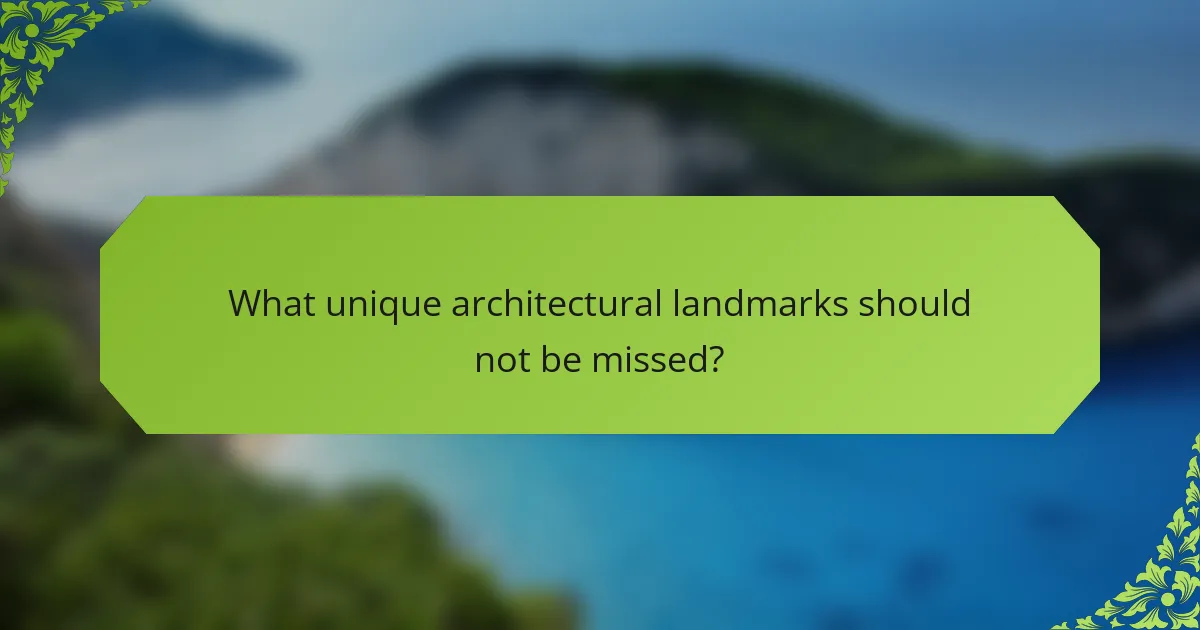
What unique architectural landmarks should not be missed?
Barcelona boasts unique architectural landmarks that should not be missed, including Sagrada Família, Park Güell, Casa Batlló, and Casa Milà. Each site showcases distinct styles and historical significance, making them essential for any visitor.
Sagrada Família, designed by Antoni Gaudí, features intricate facades and towers reaching 170 meters. Park Güell, another Gaudí masterpiece, combines natural forms with colorful mosaics, offering panoramic city views. Casa Batlló’s organic shapes and vibrant colors exemplify modernisme architecture, while Casa Milà, known as La Pedrera, presents a wavy stone facade and innovative design.
These landmarks reflect Barcelona’s rich architectural heritage and creativity, attracting millions of visitors annually.
How does the Sagrada Família differ from other basilicas?
The Sagrada Família stands out from other basilicas due to its unique architectural style, blending Gothic and Art Nouveau elements. Unlike traditional basilicas, it features intricate facades, organic forms, and symbolic designs. The ongoing construction, which began in 1882, adds to its uniqueness, as it evolves continuously, reflecting Antoni Gaudí’s vision. Its iconic towers, set to reach 172.5 meters upon completion, will surpass most other basilicas, emphasizing its monumental scale and spiritual significance.
What makes Casa Batlló a standout example of Modernisme?
Casa Batlló stands out as a prime example of Modernisme due to its unique architectural design and innovative use of materials. The building features organic shapes, vibrant colors, and intricate details that reflect nature. Antoni Gaudí’s vision is evident in the flowing lines and skeletal forms, which create a sense of movement. The façade, adorned with mosaic tiles and sculpted balconies, showcases the unique attribute of its dragon-like appearance. Additionally, Casa Batlló’s interior includes rare elements such as the use of light wells and curved glass, enhancing the overall sensory experience. This masterpiece not only represents the artistic movement but also embodies the cultural identity of Barcelona.
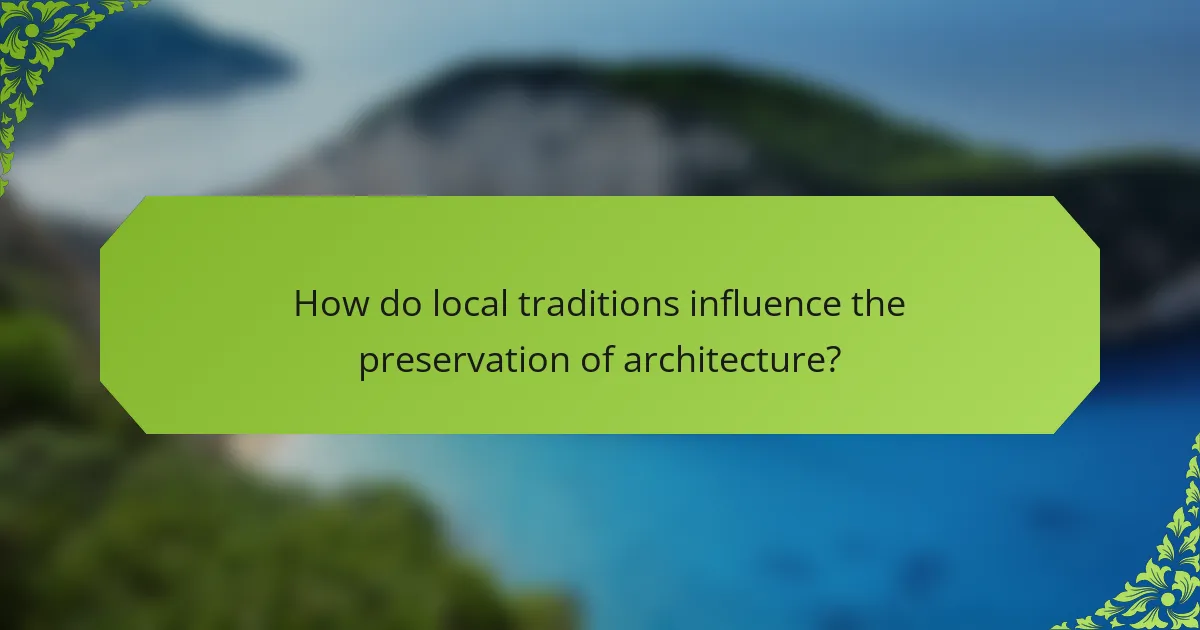
How do local traditions influence the preservation of architecture?
Local traditions significantly influence the preservation of architecture by fostering community engagement and cultural pride. In Barcelona, local customs and historical practices drive the maintenance and restoration of architectural wonders. For example, the Catalan tradition of celebrating architectural heritage through festivals promotes awareness and appreciation. This cultural connection ensures that structures like the Sagrada Família and Casa Batlló are preserved for future generations, highlighting the unique attributes of Catalan Modernisme. Local craftsmanship also plays a crucial role, as artisans continue to use traditional techniques in restoration projects, further enriching the city’s architectural landscape.
What role do community initiatives play in maintaining historical sites?
Community initiatives play a crucial role in preserving historical sites by fostering local engagement and funding. They encourage volunteer participation, which helps maintain and restore architectural wonders. For example, initiatives can lead to educational programs that raise awareness about the cultural significance of these sites. Moreover, partnerships with local businesses can provide financial support for ongoing maintenance efforts. This collaborative approach not only protects the history of Barcelona’s architectural gems but also strengthens community identity and pride.
How do festivals celebrate Barcelona’s architectural heritage?
Festivals in Barcelona celebrate architectural heritage through immersive experiences and artistic showcases. Events like the Festa de la Merce highlight iconic structures such as the Sagrada Familia and Casa Batlló, engaging visitors with guided tours and performances. Architectural competitions during these festivals encourage innovation while honoring traditional styles. Additionally, light installations and art projections on historical buildings create a captivating atmosphere, merging culture with architectural appreciation. These celebrations foster community pride and attract tourism, ensuring the city’s architectural wonders remain vibrant and relevant.
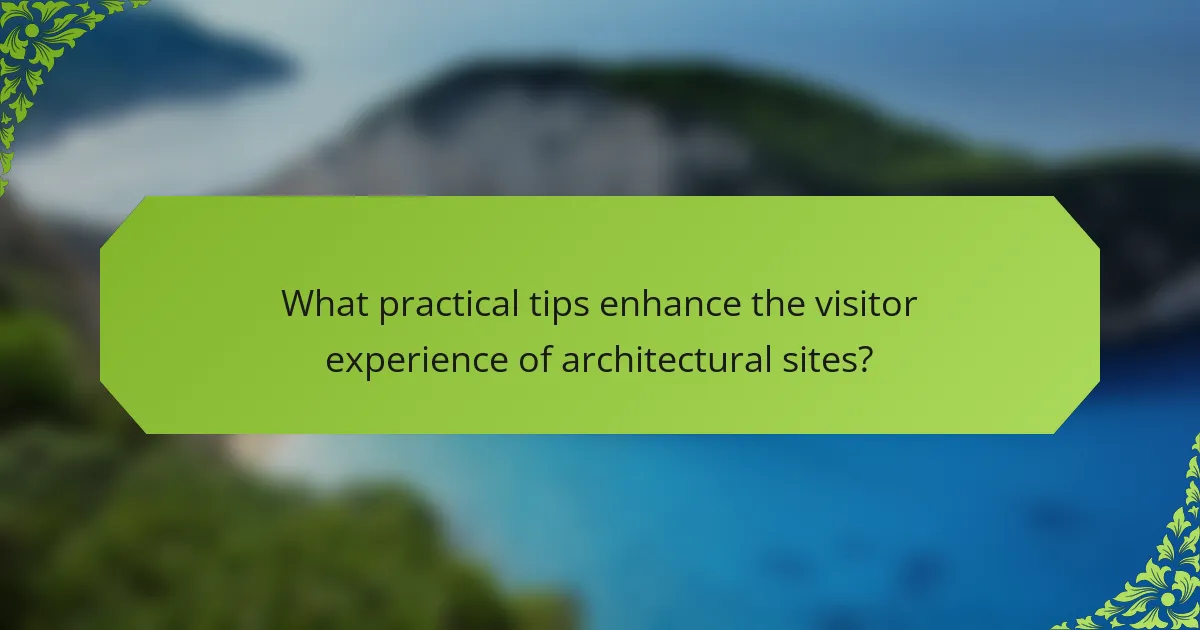
What practical tips enhance the visitor experience of architectural sites?
To enhance the visitor experience of architectural sites in Barcelona, focus on guided tours, interactive exhibits, and strategic timing. Guided tours provide insights into the history and significance of each site, enriching the visit. Interactive exhibits engage visitors, allowing them to explore architectural styles hands-on. Visiting during off-peak hours ensures a more relaxed experience, avoiding crowds at popular sites like La Sagrada Familia and Park Güell.
Which times of year offer the best views and experiences?
Spring and fall offer the best views and experiences of Barcelona’s architectural wonders. During these seasons, the weather is mild, enhancing the enjoyment of outdoor explorations.
In spring, blooming flowers complement the city’s vibrant architecture, making landmarks like Sagrada Familia and Park Güell particularly picturesque. Fall provides a similar charm, with fewer tourists and clear skies, allowing for more intimate experiences at sites like Casa Batlló and La Pedrera.
Summer can be hot and crowded, while winter, though cooler, offers unique festive decorations around the city. To fully appreciate Barcelona’s architectural styles, aim to visit during spring or fall.
What common mistakes do visitors make when touring architectural sites?
Visitors often make mistakes such as overlooking essential details, not planning their itinerary, and failing to respect site rules. These errors can diminish the experience of Barcelona’s architectural wonders.
One common mistake is rushing through sites without appreciating the historical context. Many visitors skip guided tours, missing valuable insights into architectural styles like Modernisme. Additionally, neglecting to check opening hours can lead to disappointment.
Another frequent error is not considering accessibility options. Some architectural sites have limited access for those with mobility issues, which can affect enjoyment.
Lastly, visitors often underestimate the importance of photography etiquette. Taking photos in restricted areas can lead to conflicts with staff or other guests.
How can technology enhance the exploration of Barcelona’s architecture?
Technology enhances the exploration of Barcelona’s architecture through interactive apps, virtual reality tours, and augmented reality experiences. These tools provide immersive insights into historical styles and details of iconic structures. For example, apps can offer audio guides that highlight unique attributes of Gaudí’s works, while virtual reality can recreate lost architectural elements. As a result, visitors gain a deeper understanding of the city’s architectural evolution and significance.
